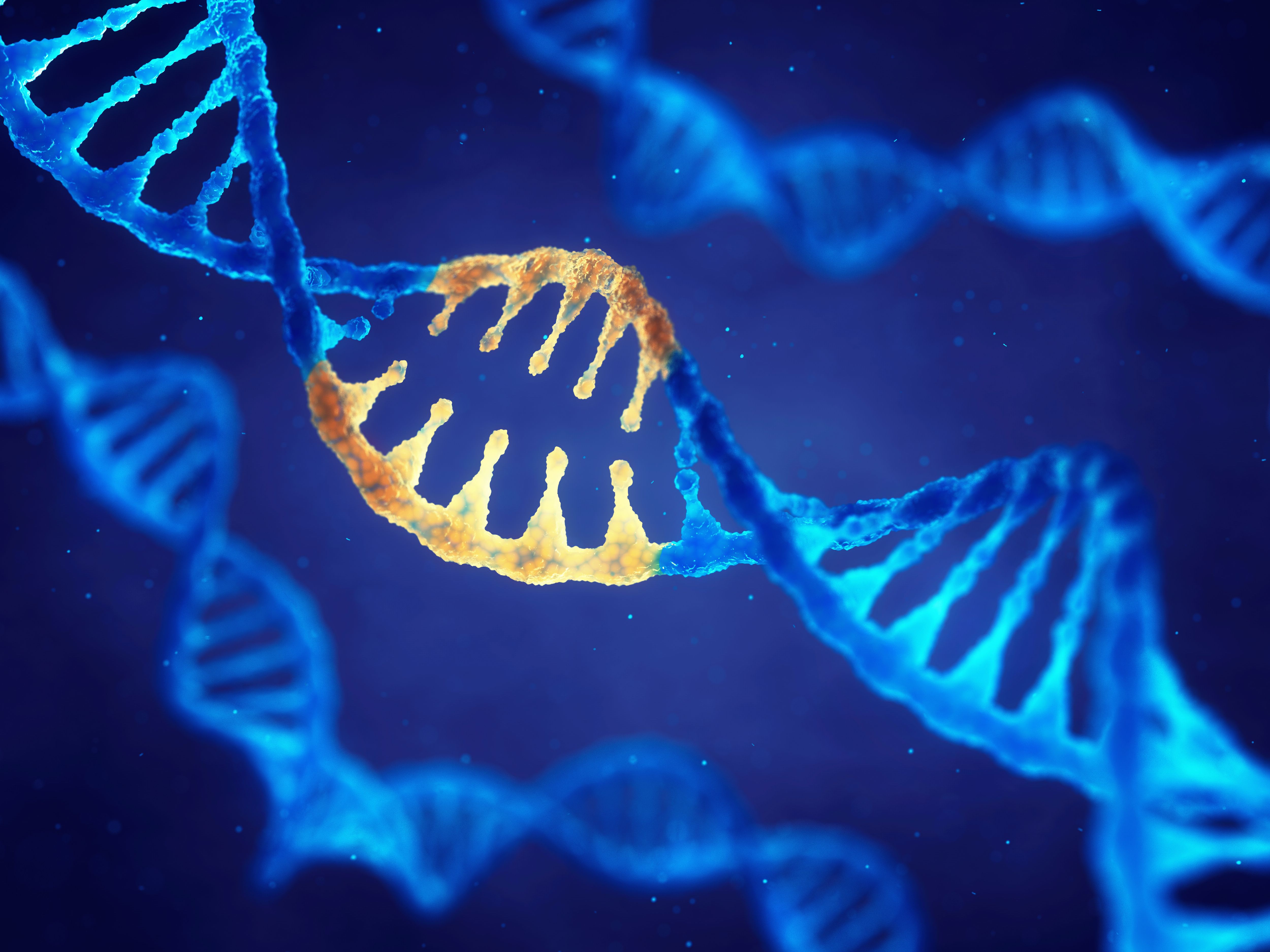Article
FDA Approves First Gene Therapy for Patients Aged 6 Months and Older with Serious Genetic Skin Disorder
Author(s):
Beremagene geperpavec completely closed severe blistering and wounds in more than half of all patients with dystrophic epidermolysis bullosa with specific mutations.
The FDA approved beremagene geperpavec (Vyjuvek; Krystal Biotech Inc.), a herpes-simplex virus type 1 (HSV-1) vector-based gene therapy to treat wounds in patients aged 6 months and older with dystrophic epidermolysis bullosa (DEB) who have 1 or more mutations in the collagen type VII alpha 1 chain (COL7A1) gene.
Gene therapy illustration | Image credit: nobeastsofierce - stock.adobe.com

The approval is based on the results of a recent study that established the therapy’s safety and efficacy. At 24 weeks, 65% of patients treated with beremagene geperpavec experienced 100% wound-closure compared to 26% of patients treated with placebo, according to the study.
“[Beremagene geperpavec] is the first FDA-approved gene therapy treatment for DEB, a rare and serious genetic skin disorder,” said Peter Marks, MD, PhD, director of the FDA’s Center for Biologics Evaluation and Research, in a press release.
There are 2 main types of DEB. Dominant dystrophic epidermolysis bullosa (DDEB) causes mild blistering around the hands, feet, knees, and elbows, whereas recessive dystrophic epidermolysis bullosa (RDEB) can cause widespread blistering that leads to vision loss, disfigurement, and possibly fatal medical complications.
DEB is caused by a mutation of the COL7A1 gene. The COL7A1 gene encodes an essential protein called type VII collagen (COL7), which holds the epidermis and dermis together. Because of its importance for skin integrity and strength, deficiencies of COL7A1 can lead to painful and debilitating blisters and wounds.
Investigators conduced a randomized, double-blinded, placebo-controlled study to establish safety and efficacy data of beremagene geperpavec, including 31 patients with DEB (30 with RDEB, 1 with DDEB). Patients with similar wounds were randomized to either receive topical beremagene geperpavec or placebo every week and endpoints were evaluated at follow-up at 24 weeks.
The primary efficacy endpoint was improved wound healing, defined as the difference in the proportion of confirmed complete (100%) wound closure between patients treated with beremagene geperpavec versus placebo at 24 weeks.
The most common adverse events associated with beremagene geperpavec were itching, chills, redness, rash, cough, and runny nose. In a separate clinical study, there were no new safety findings for patients with RDEB under age 1 who received topical beremagene geperpavec.
Beremagene geperpavec is a genetically modified herpes-simplex virus that delivers molecules with normal COL7A1 genes to the wounds. It also lowers the ability of mutated COL7A1 genes to replicate in normal cells. Beremagene geperpavec is mixed into a nonactive gel which is topically applied to the skin.
The application for beremagene geperpavec received Orphan Drug, Fast Track, Regenerative Medicine Advanced Therapy, and Priority Review designations from the FDA. It also received a Rare Pediatric Disease Priority Review Voucher, which is part of an FDA program that encourages the development of new drugs and biologics to prevent or treat rare diseases in children.
“Today’s action demonstrates the FDA’s ongoing commitment to supporting the development and evaluation of new treatments that address unmet needs for rare diseases or conditions,” Marks said in the press release.
Reference
FDA. FDA Approves First Topical Gene Therapy for Treatment of Wounds in Patients with Dystrophic Epidermolysis Bullosa. News Release. May 19, 2023. Accessed May 22, 2023. https://www.fda.gov/news-events/press-announcements/fda-approves-first-topical-gene-therapy-treatment-wounds-patients-dystrophic-epidermolysis-bullosa






